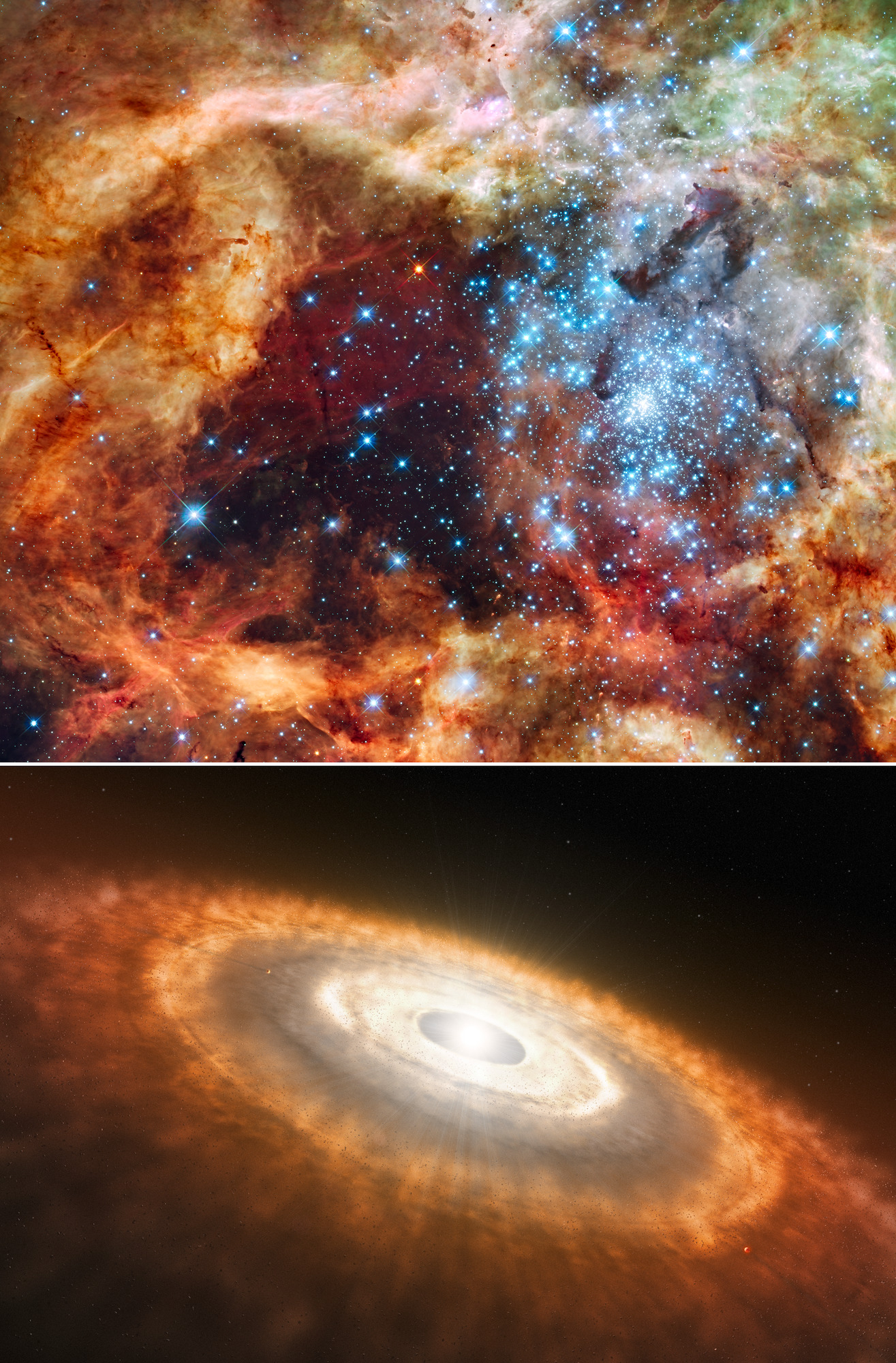
Hubble ULLYSES Program: 30 Doradus in the Tarantula Nebula
The ULLYSES program studied two types of young stars: super-hot, massive, blue stars and cooler, redder, less massive stars than our Sun. The top panel is a Hubble Space Telescope image of a star-forming region containing massive, young, blue stars in 30 Doradus, the Tarantula Nebula. Located within the Large Magellanic Cloud, this is one of the regions observed by ULLYSES. The bottom panel shows an artist's concept of a cooler, redder, young star that is less massive than our Sun. This type of star is still gathering material from its surrounding, planet-forming disk.
Credits: NASA, ESA, STScI, Francesco Paresce (INAF-IASF Bologna), Robert O'Connell (UVA), SOC-WFC3, ESO
Image CreditNASA, ESA, STScI, Francesco Paresce (INAF-IASF Bologna), Robert O'Connell (UVA), SOC-WFC3, ESO
Size640x973px
